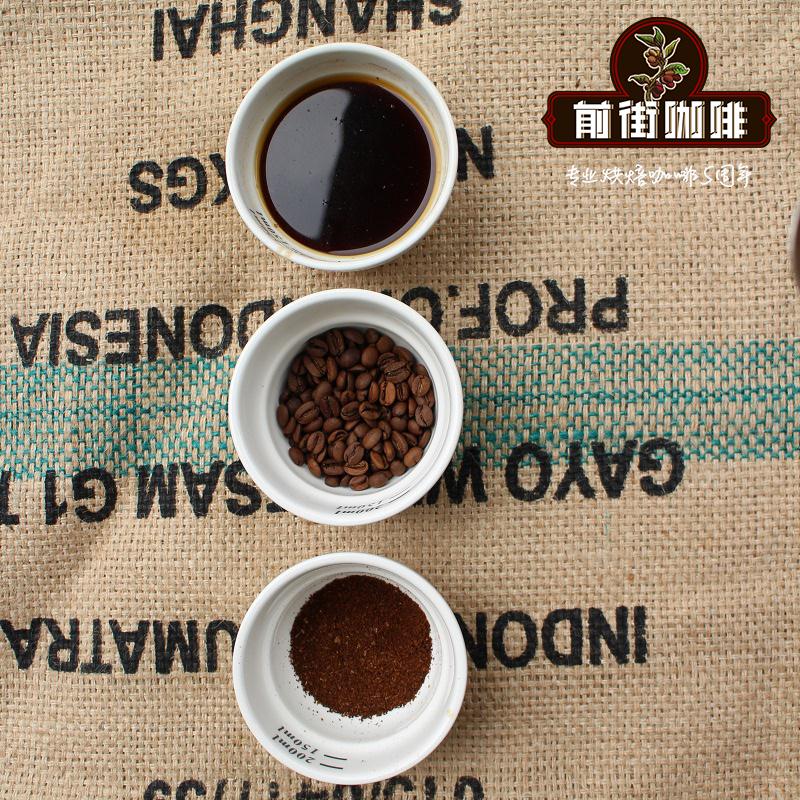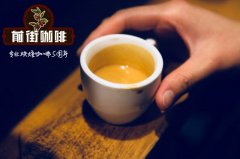Introduction to the Flavor characteristics of Alvado Wula Manor Coffee
El Salvador, known as the "land of volcanoes", the smallest country in Central America, has a reputation beyond life in specialty coffee-growing areas.
Although coffee was grown mainly for domestic consumption, it became a stable and important crop over the next 100 years, especially in the late 19th century, when the country's indigo exports were developed by synthetic dyes and were widely marketable.
By the late 1970s, coffee exports accounted for 50 per cent of GDP, but socio-economic and political unrest plunged the country into civil war for more than a decade, while in the 1980s, various land redistribution projects and land reforms disjointed the coffee industry. led to a decline in the market. Producers abandoned their coffee farms because of a lack of resources to continue farming, and many had been overgrown and unharvested for years before a peace agreement was reached in the 1990s.
El Salvador is mainly divided into five main producing areas, namely Apaneca, Central Belt, Chichontepec, Tecapa & Cacahuatique Mountain Range, which are roughly distributed on alpine slopes or plateau areas covered with volcanic ash above 1200 meters above sea level. Most of them grow coffee by "shade" (planting Shade Grown in the shade of trees). The advantages of this method are that coffee beans can mature uniformly, honey mucus content increases, weight is high, and sweet polyphenols are more likely to be formed. Let the main ingredients of coffee beans be fully formed. For coffee trees with too much sunshine, the edges of the leaves will be rolled up, causing water loss, which is not conducive to photosynthesis, reduce carbon dioxide absorption, and reduce the combination of sugar.
This is the largest producing area in El Salvador, and although there is frequent volcanic activity in the Apaneca-Ilamatepec Mountains, it does not affect the production of high-quality coffee.
There are four volcanoes, mainly Santa Ana (also known as Ilamatepec), while coffee is grown on the slopes on both sides of the mountains. It suffered ash from the Santa Ana volcano in 2005, and the next two years had a great impact on the area, with most coffee farms suspended for two years.
Pacamara is the artificial breeding variety of Pacas and Maragogipe. It was first cultivated by researchers in El Salvador in 1958. Pacamara is an excellent variety under rare artificial breeding, which is better than blue, and perfectly inherits the advantages of the mother plant. Both the excellent taste of Pacas and the large size of Maragogipe are inherited by raw bean granules. The bean body is at least 70% and 80% of that of elephant beans, with more than 17 orders and more than 100% and more than 18 eyes. Average bean length 1.03 cm (general bean about 0.8-0.85 cm) average bean width 0.71 cm (general bean about 0.6-0.65), thickness 0.37 cm, bean shape plump and round. The biggest feature of this variety is that it is sour, lively and tricky, sometimes biscuit, sometimes fruity, thick and greasy.
This variety, which is mated by "Pacas" of Bourbon and "Marago Gippe" of Elephant Bean, is a winning variety in many cup testing competitions at present, which was born in El Salvador.
Mount Wula Manor
Country: El Salvador
Variety: bourbon
Producing area: Santa Ana
Treatment method: honey treatment
Flavor description: citrus, berries, black plum, roasted almonds, cream, chocolate, juicy feeling

Important Notice :
前街咖啡 FrontStreet Coffee has moved to new addredd:
FrontStreet Coffee Address: 315,Donghua East Road,GuangZhou
Tel:020 38364473
- Prev

Introduction to Kenya How is Kenya coffee graded?
Kenya coffee growing areas Kenya coffee growing areas are mainly concentrated in Mount Kenya (Mt. Kenya) represents the plateau area. Tropical climate, acidic red volcanic soil for coffee provides a natural suitable growth environment. The main producing areas are Nyeri and Ruiru in the central part. Kenyan coffee varieties originally brought to Kenya for cultivation were Bourbon waves
- Next

Panamanian Emerald Manor characteristics of Summer Coffee beans in the World's Ten Coffee Manors with Blue, Green and Red Rose
LaEsmeraldaEstate (Bouquete) Jadeite Manor is located in the corner of Baru volcano, so the coffee beans produced in this area are mostly named after Baru Mountain when they are not famous, and the surrounding area of Bouquete is scenic.
Related
- Detailed explanation of Jadeite planting Land in Panamanian Jadeite Manor introduction to the grading system of Jadeite competitive bidding, Red bid, Green bid and Rose Summer
- Story of Coffee planting in Brenka region of Costa Rica Stonehenge Manor anaerobic heavy honey treatment of flavor mouth
- What's on the barrel of Blue Mountain Coffee beans?
- Can American coffee also pull flowers? How to use hot American style to pull out a good-looking pattern?
- Can you make a cold extract with coffee beans? What is the right proportion for cold-extracted coffee formula?
- Indonesian PWN Gold Mandrine Coffee Origin Features Flavor How to Chong? Mandolin coffee is American.
- A brief introduction to the flavor characteristics of Brazilian yellow bourbon coffee beans
- What is the effect of different water quality on the flavor of cold-extracted coffee? What kind of water is best for brewing coffee?
- Why do you think of Rose Summer whenever you mention Panamanian coffee?
- Introduction to the characteristics of authentic blue mountain coffee bean producing areas? What is the CIB Coffee Authority in Jamaica?

